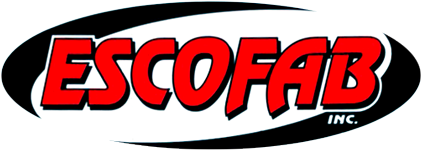According to research, the metal fabrication industry is worth about $17 billion and is set to hit a monumental $23 billion by 2030. This industry is essential to many other industries, including construction, automotive, and aeronautical. It’s responsible for creating the parts and components that make up these products we use every day.
So, what does the future of metal fabrication look like? The answer lies in two things: technology and sustainability. As technology advances, so does the metal fabrication industry. We now have access to better machines and tools that allow us to create stronger and more precise parts. So, how can the future of metal fabrication change? Here are some of the top emerging trends in the metal fabrication industry.
Digitization
The term “digitization” is often used interchangeably with “automation.” However, these two concepts are different from each other. Automation pertains to the use of machines to complete certain tasks, while digitization is the process of converting data or information into a digital format.
In the context of metal fabrication, digitization can be used to develop a three-dimensional (3D) model of the product before it is even created. This allows for a more accurate assessment and lessens the chances of errors.
Reshoring
The process of moving manufacturing jobs back to the country where the product will be sold is known as “reshoring.” In recent years, there has been a significant increase in the number of companies that are reshoring their metal fabrication processes.
There are several reasons why this trend is emerging, but one of the main reasons is the high cost of labor in countries where metal fabrication has been outsourced. In addition, the quality control issues and long lead times associated with overseas production have also contributed to the reshoring trend.
Increased Use of Sustainable and Recycled Materials
The metal fabrication industry is not immune to the call for sustainable practices. As more and more people become aware of the importance of sustainability, the demand for eco-friendly products also increases. This, in turn, pushes manufacturers to use sustainable materials in their products.
One way that metal fabricators are becoming sustainable is by using recycled materials. In addition to this, sustainable materials are also becoming more popular because they are often cheaper than their non-sustainable counterparts.
3D Printing
The future of metal fabrication is not complete without mentioning the impact of additive manufacturing, also known as three-dimensional (3D).
The use of additive manufacturing has increased in recent years as technology has become more accessible and affordable. In the past, additive manufacturing was mostly used for prototyping and small-scale production. However, with the advancement of technology, additive manufacturing is now being used for large-scale production runs.
Additive manufacturing offers a number of advantages over traditional manufacturing methods. It is a more efficient process as it eliminates the need for tooling and fixtures. In addition, it allows for more complex designs that would not be possible with traditional manufacturing methods.
Robotics
Robotics is another area of technology that is having a significant impact on the metal fabrication industry. Robotics offers many advantages over traditional manufacturing methods, including increased accuracy, repeatability, and speed.
One of the most exciting applications of robotics in the metal fabrication industry is in the area of welding. Welding robots are able to weld faster and more accurately than human welders. In addition, they are able to work in difficult-to-reach places and can be used in hazardous environments.
What Is the Future of Metal Fabrication: What to Expect
The future of the metal fabrication industry is exciting. With the continued advancement of technology, we can expect to see even more amazing innovations in the years to come. We can expect to see more sustainable practices, increased use of robotics and automation, and the continued rise of additive manufacturing. All of these trends will help to make metal fabrication even more efficient, accurate, and cost-effective. For all your metal fabrication needs, contact Escofab Inc. today.
